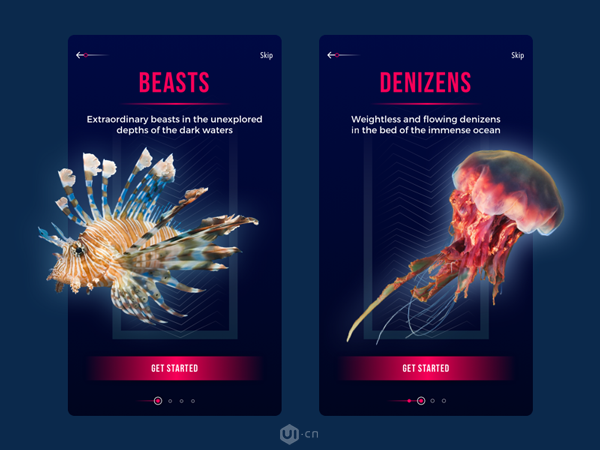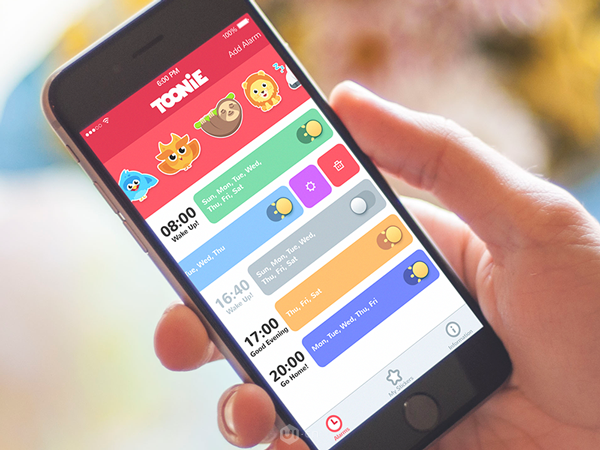Every designer wants users to fall in love with their products, but we have to give a user a reason to fall in love with their products. Hope this article’s explanation of user motivation will help you find that reason.
Most designers hope that their products can be recognized and loved by users. After the products are launched, they will obtain user feedback through various channels. I do not deny the importance of user feedback, but it is too late for us to judge whether the product is good or bad through user feedback after the product is launched. Before the product goes online, even when the product is in the design stage, we should have a clearer understanding of the prospects of this product. Of course, in order to achieve this “unexplored prophet” state, we must have a sufficient understanding of users and know how to drive users to use your product. Next, we will explain the impact of motivation on design from the perspective of user experience.
What is the motivation?
Motivation is a psychological term. This concept explains the reasons why humans make specific behaviors in specific environments. Simply put, motivation is the inner driving force of human behavior. The generation of motivation is greatly related to the physical, psychological, social relationship and cognitive level. Motivation mainly has the following three characteristics:
- Activate-make decisions and set goals;
- Persistence-the duration of the behavior driven by the motivation;
- Intensity-the degree of desire to complete the set goal.
Why do designers need to understand user motivation and even user psychology? Because understanding user motivation helps us better understand user expectations and user pain points. You design an app that is very practical, and you are confident that users will fall in love with it immediately after using it once. But the premise is “the user has used it once”. In the current era of high homogeneity of products, it is the first and most important channel to induce users to use your products while ensuring the functionality of the products and at the same time being able to give users enough attractiveness on the packaging.
Intrinsic motivation and extrinsic motivation
Motivation is divided into extrinsic motivation and intrinsic motivation. We call the tendency of external factors to motivate users’ specific behaviors as extrinsic motivation. In most cases, we can regard extrinsic motivation as seeking rewards, which can be tangible (money, prizes, diplomas, certificates, trophies, medals, etc.) or intangible (commendation, support, recognition, etc.). Competition itself is a typical manifestation of extrinsic motivation. Those who are very competitive do not really want those prizes. They seek a kind of recognition-I am stronger than others.

Extrinsic motivation has become the research object of many user experience designers and has been applied to many Internet products. For example, if you become a gold member of Youku, you can see the release of “Sherlock” earlier than others; you persisted in memorizing words in scallops for 100 days, and showed off in your circle of friends; your works I posted the homepage of UI China and received unanimous praise from everyone. All of the above is the application of extrinsic motivation in the user experience to increase user stickiness.
Intrinsic motivation refers to internal factors that drive people to make specific behaviors. Intrinsic motivation comes from a person’s inner world and is formed by a person’s hopes and needs. When people’s basic needs are met, such as food and housing, they will want to meet higher-level needs. Trying new things, accepting new challenges, and maximizing one’s potential are all human natures. We learn a new knowledge or master a new skill, and we will get a sense of accomplishment from it. Therefore, internal motivation can be attributed to the pursuit of a better self .
In user experience, what we call intrinsic motivation means that users use a product because the product itself stimulates their interests and desires, and it exists in the user’s heart rather than relying on any external force. For example, users turn on “Gudong” when running, and “scallop” when memorizing words. What drives them is mainly to pursue a better self (healthy body, better foreign language). Of course, the screenshots are sent to the circle of friends to show off this external motivation. Compared with external motivations, internal motivations can retain users better. People who really want to learn English must persist for longer than those who just want to show up in their circle of friends. When users are truly driven by intrinsic motivation, using this product itself is the greatest enjoyment.
Establish user motivation through design

Users like to play gluttonous snakes mainly because of their extrinsic motivation to compete and win rewards. Users can share their achievements on social networks, and outside encouragement and appreciation are important external motivations that trigger users to continue using them.

The Encyclopedia of Underwater World is based on the inherent motivation of users to desire new knowledge. A high-quality guide page design will increase users’ expectations of this application, and their desire to use it will increase.

Toonie Alarm includes intrinsic motivation (persisting to get up on time) and extrinsic motivation (getting the title of little wake-up expert).

Upper focuses on the user’s intrinsic motivation to improve work efficiency.

Reasonable selection of copywriting will also stimulate users’ desire to use, and publicize the benefits of using this product, the results that can be achieved, and the complete auxiliary services to users.
Summarize
Motivation is extremely important to a person’s behavioral drive, but it is very difficult to find out the user’s intrinsic motivation. Because most users themselves don’t know what they want, but users don’t know their motives does not mean they have no motives. Henry Ford, the founder of Ford Motors, once said: “If we listen to users, we can’t build a car at all. The user just needs a fast horse.” But when the car is really built, it is between the fast horse and the car. , The user will still use the car. Because the fundamental motivation for users’ demand for fast horses is faster transportation. Users’ ignorance of product design details will cause them to fail to correctly reflect their motives. However, driven by motivation, users will still make rational judgments when making decisions.
Every designer wants users to fall in love with their products, but we have to give a user a reason to fall in love with their products. Hope this article’s explanation of user motivation will help you find that reason.

